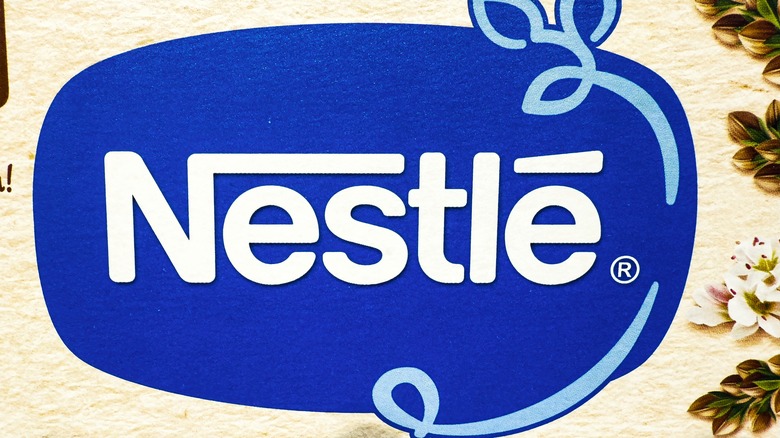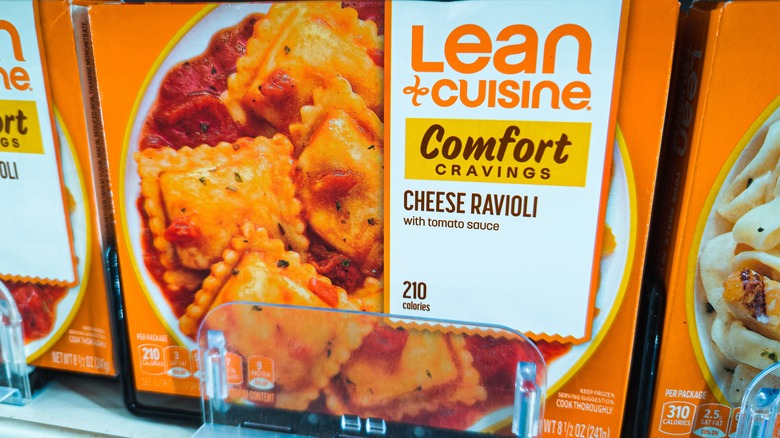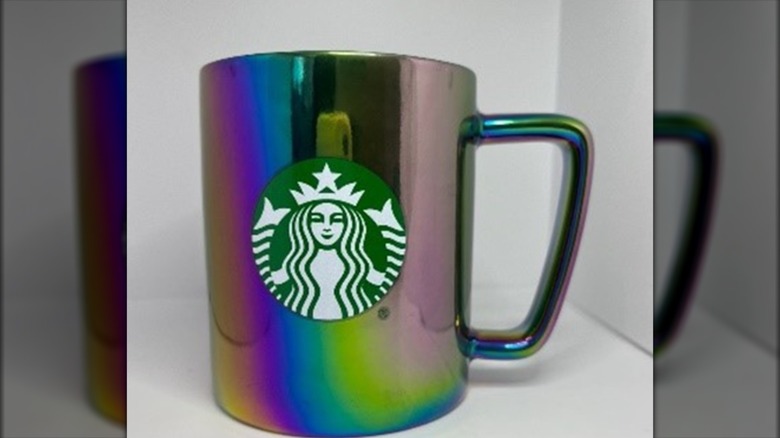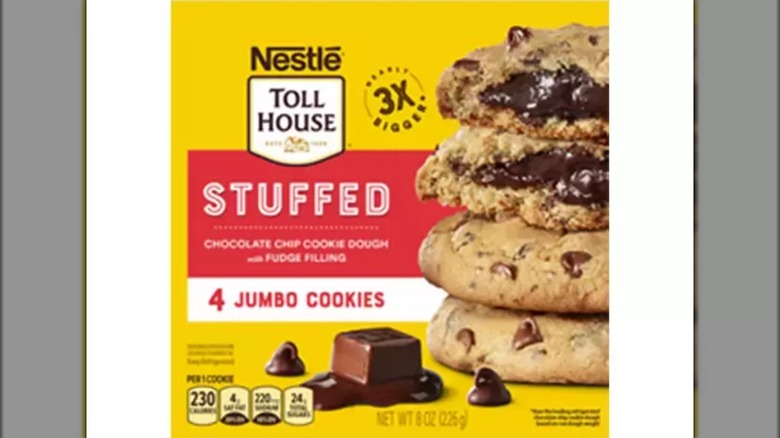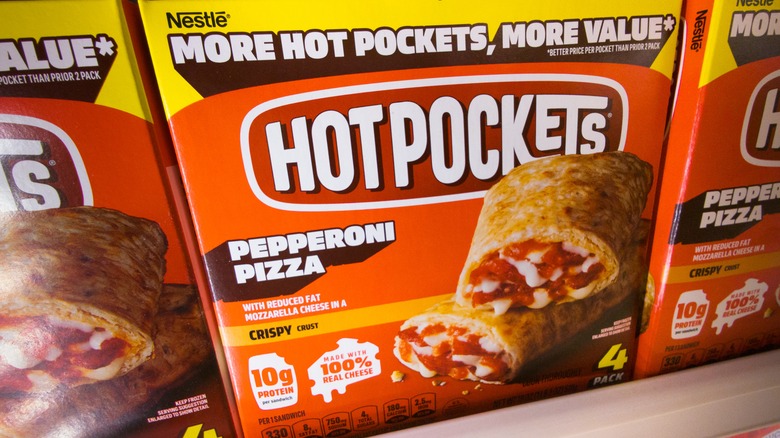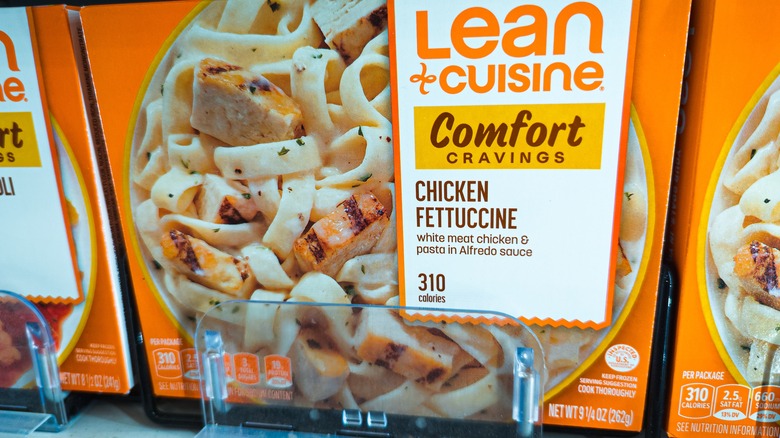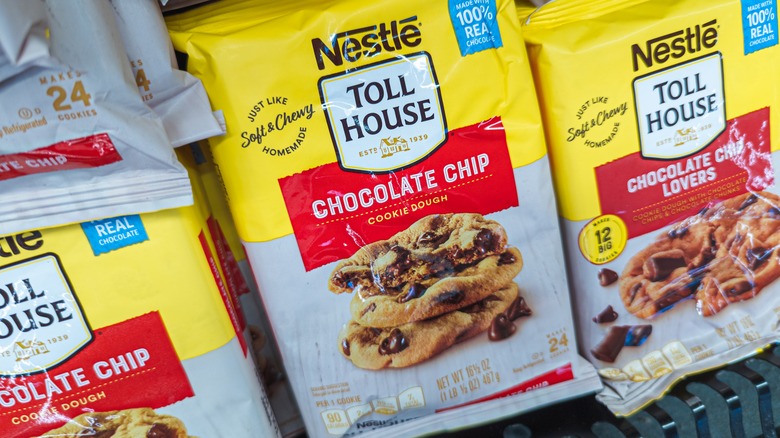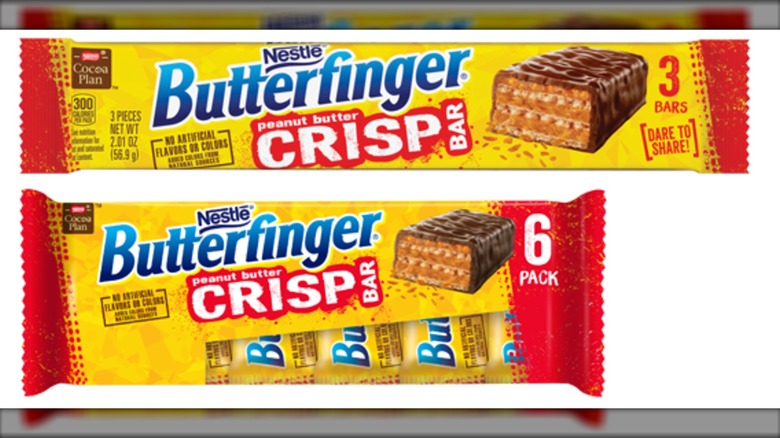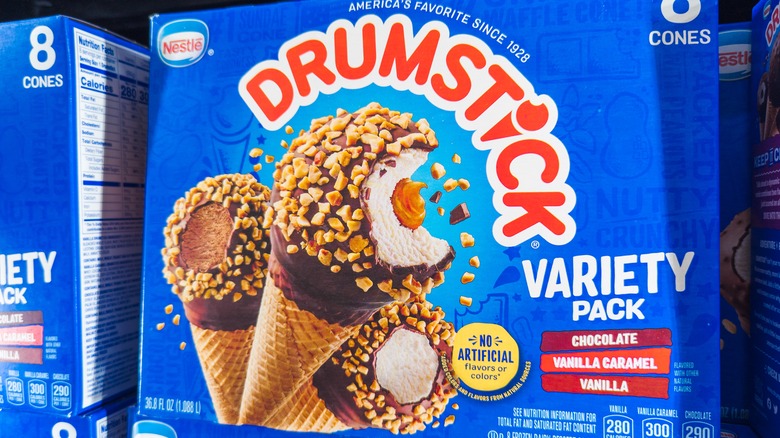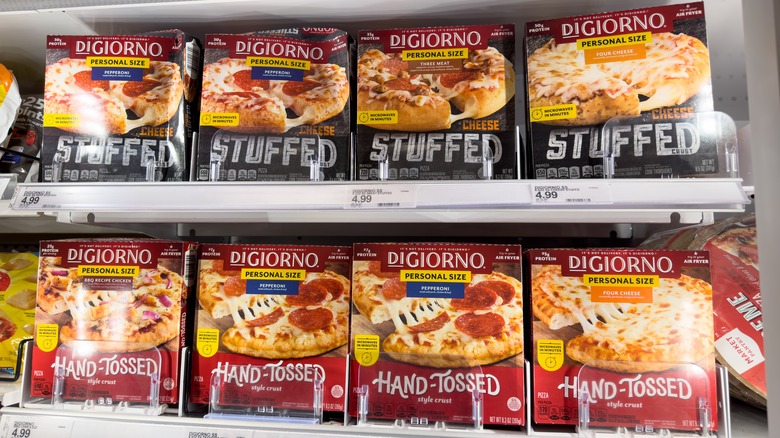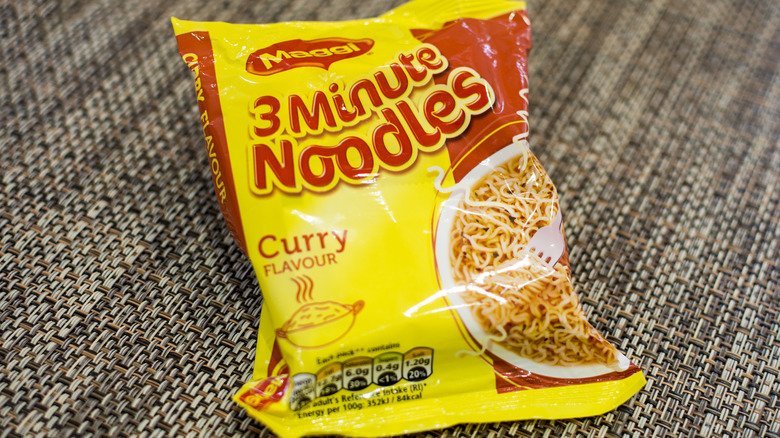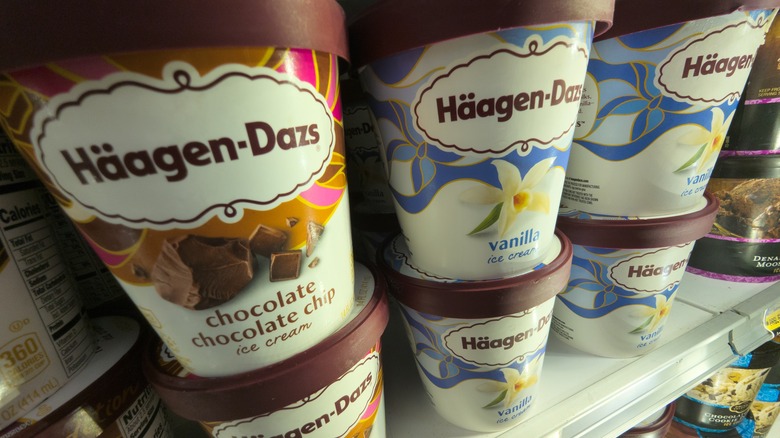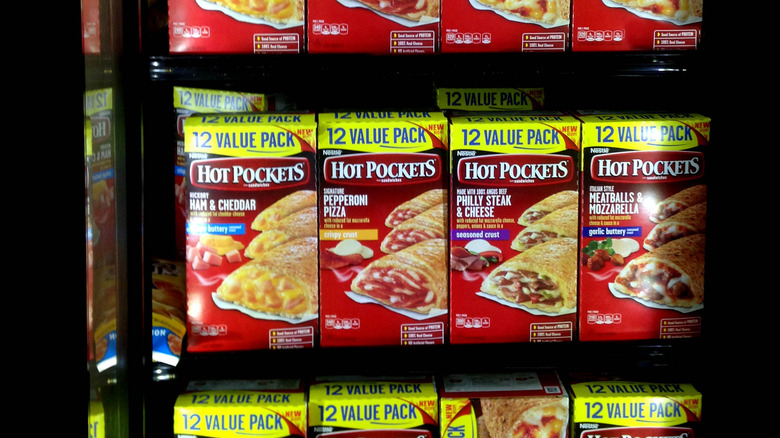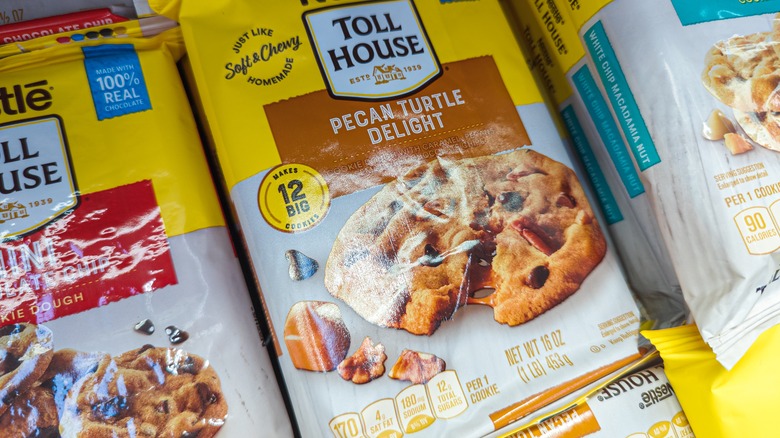14 Nestle Recalls That Impacted Millions
Nestlé is a massive company. While you might only associate the name with those brands that wear it loud and proud (think Nestlé Toll House cookies or Nestlé Drumsticks), Nestlé actually encompasses more than 2,000 brands over seven product categories, selling those products in 185 countries. With its roots planted in the founding of the Anglo-Swiss Condensed Milk Company in 1866 and Henri Nestlé's development of a milk-based baby food, what would one day become the Nestlé company quickly grew from there, expanding its product line and geographical footprint, acquiring other brands along the way. Now, you can hardly walk down a grocery store aisle without seeing something produced by Nestlé.
Of course, with all that growth, prosperity, and reach, not everything is going to be perfect. Accidents happen, and with the seemingly continual rise of food recalls, it's not surprising that Nestlé has experienced its fair share of product snafus that have led to substantial recalls over the last few decades. Here are a few of the most impactful.
Lean Cuisine ravioli recall (2025)
In April 2025, Nestlé USA recalled more than 50,000 cases of frozen Lean Cuisine meals. The affected butternut squash ravioli, which were selling in 37 states, reportedly had the potential to contain foreign objects, as one consumer told Nestle that they had choked on a wood-like material while eating one of the meals. Out of an abundance of caution, Nestle has extended the recall from the butternut squash ravioli to also include Lean Cuisine's lemon garlic shrimp stir-fry and spinach artichoke ravioli, as well as Stouffer's party-size chicken lasagnas.
The detection of wood particles in food products is one of the most common reasons for food recalls, as wood often makes its way into food during the harvesting or manufacturing process. However, just because wood in processed food is common, that doesn't mean it's at all safe. In some instances, consumers report not just choking on wood-like pieces in recalled food, but also mouth or dental injuries.
Nestlé Starbucks mug recall (2024)
While Nestle doesn't own Starbucks, it did pay Starbucks more than $7 billion in 2018 for the rights to sell Starbucks products outside of Starbucks stores. As such, when a Starbucks-branded mug in a holiday gift set needed to be recalled in 2024, it was Nestlé on the hook rather than the coffee company (though Starbucks has its own extensive number of recalls).
The mugs were part of a gift set that included coffee, cocoa, and two metallic mugs, sold at Target and Walmart through the prior holiday season. Unfortunately for consumers, though, the mugs couldn't manage to do the very thing they were designed for: hold hot liquids. In a dozen incidents, the mugs, when microwaved or filled with hot liquid, broke, leading to consumers experiencing severe burns and lacerations, with one customer requiring medical attention.
Unfortunately, Nestle didn't issue the recall for the mugs until March 2024 — well after the holiday period, by which time the dangerous mugs had mostly found their homes. Nearly half a million mug sets were recalled.
Nestlé Toll House stuffed chocolate chip cookie dough recall (2022)
Nestlé's Toll House stuffed chocolate chip cookie dough is exactly what your sweet tooth is craving. Giant, jumbo cookies are filled with a fudge-y, gooey center.
Unfortunately, though, in 2022, customers found something else stuffed into those chocolate chip cookies. In October of that year, multiple consumers complained to Nestlé that they were finding small pieces of white plastic in the cookie dough. As a result, Nestle issued a recall for the product across the entire United States, as well as Puerto Rico.
Like wood, plastic is a common foreign material that makes its way into processed food. Often, that plastic comes from the processing line when something accidentally breaks. Luckily, plastic isn't toxic, and a small piece of plastic will likely pass through your digestive tract with no issue after a few days. However, if the piece of plastic is large enough, it can cause you to choke, as well as cause chest pain or stomach pain. Some individuals are also allergic to plastic, and ingesting plastic can trigger an allergic reaction.
Pepperoni Hot Pocket recall (2021)
No one's going to argue that a Hot Pocket is the healthiest meal on the planet, but eating one (or two) isn't going to kill you — most of the time. In 2021, more than 760,000 pounds of Nestlé pepperoni Hot Pockets were shipped out to stores with potentially glass and hard plastic inside.
In the recall, Nestlé advised consumers to throw out or return their Hot Pockets, and via returns, Nestlé was able to recover just under 220,000 pounds of the 760,000 pounds of Hot Pockets affected. Many consumers, though, could have eaten the Hot Pockets without ever realizing the danger, as the Hot Pockets were produced in November 2020 and the recall wasn't issued until February 2021. This happened after consumers reached out to Nestlé to complain about finding foreign materials in their food, including one who reported an oral injury. The U.S. Department of Agriculture's Food Safety and Inspection Service ranked the recall as a Class I recall, which means the organization feels consumers have a reasonable probability of being seriously adversely affected, or dying, by eating the product.
Two Lean Cuisine recalls (2020)
In 2020, Nestlé had to issue not one but two Lean Cuisine recalls. In the first, issued in May 2020, Nestle recalled more than 29,000 pounds of Lean Cuisine fettuccini alfredo, as the product contained chicken — which it's not supposed to — and that chicken introduced a known allergen to the product (soy), which was also not listed on the packaging. Nestlé only became aware of the situation when consumers began complaining that they were finding chicken in their fettuccini alfredo (if they'd wanted chicken, they would've purchased the similar but separate chicken fettuccine, after all!).
Chicken was at the center of Nestlé's late 2020 recall as well. In December, Nestlé recalled more than 90,000 pounds of Lean Cuisine baked chicken meals, as they were found to contain white, hard plastic. The meals featured stuffing, mashed potatoes, and gravy alongside the chicken, and Nestlé believed that a plastic conveyor may have broken over the course of the meals' production, and then the conveyor's plastic pieces made their way into the meal's mashed potatoes.
Nestlé Toll House Cookie Dough recall (2019)
In October 2019, Nestlé recalled a huge swathe of its Toll House cookie dough products that had been distributed across both the United States and Puerto Rico. More than two dozen different types of cookie dough — from sugar cookie to oatmeal raisin, peanut butter to white chip macadamia nut — were suspected to potentially contain bits of rubber.
Occasionally, rubber gets into food while it's being manufactured, as food processing machines use rubber seals that may break down over time, and then the rubber sheds into your food. Nestle did specify that the rubber was food-grade, which means the rubber would be non-toxic if someone did accidentally eat it in their cookies, but swallowing even a small piece of rubber, like a pencil eraser, can cause an intestinal blockage or gastrointestinal distress, which may or may not require a visit to the emergency room. Point being, while food-grade rubber probably won't kill you, you don't want to risk it if there could be some lurking in your cookies.
Butterfinger Peanut Butter Crisp recall (2017)
The Butterfinger Crisp candy bar — described as a twist on the traditional Butterfinger that utilizes wafers for a more airy, crispy vibe versus the candy bar's normal dense crunch — has come and gone from the Butterfinger family over the years. In 2015, it had been discontinued. By 2017, it was back. By 2021, it was gone again. Maybe one thing that led to the candy bar's current discontinuation was the 2017 recall prompted by several consumers reporting that they'd found pieces of plastic in their candy bars. Whatever the case, the recall affected more than 5,000 pounds of Butterfingers — and when the average Butterfinger only weighs 1.9 ounces, that's a lot of candy bars.
Candy bar and candy recalls aren't anything out of the ordinary, though. Notably, in 2025, Tony's Chocolonely chocolate bars were recalled because consumers were finding small rocks in the chocolate. Also in 2025, the U.S. Food and Drug Administration issued a high-level recall for trending Dubai chocolate bars, as they were at risk for salmonella contamination.
Drumstick ice cream recall (2016)
In 2016, Nestlé issued a recall for its Drumstick ice cream cones because, after testing, it was found that Listeria monocytogenes were found on the equipment used to produce the ice cream cones. Listeria monocytogenes is a type of bacteria that leads to listeriosis, a serious form of food poisoning that can cause gastrointestinal upset in mild cases, and seizures or death in more serious cases. The elderly, children, those with weakened immune systems, and pregnant women are most at risk for contracting listeriosis, and this risk is why many pregnant women are warned away from eating foods that most commonly carry Listeria monocytogenes, such as lunchmeat and certain cheeses.
Nestlé reported that it conducts its own product safety testing, but in this particular instance, an error occurred in reporting the testing results, and so the company didn't know about the Listeria monocytogenes exposure until the impacted ice cream cones had already been shipped out to stores.
DiGiorno, Lean Cuisine, and Stouffer's recall (2016)
In 2016, Nestlé had to issue a multi-brand recall when a handful of its frozen food brands were found to contain shards of glass. All of the impacted products contained spinach, and all of the spinach was sourced from the same spot, so it's a good guess that the broken glass started out in the leafy green, and then made its way into a variety of Nestle products, including multiple types of DiGiorno pizzas, Lean Cuisine meals, and Stouffer's meals. All in all, the recall impacted a jaw-dropping 3 million frozen meals across a dozen products.
Nestle verified that no consumers had reported being injured by the products. Still, you probably didn't feel all too easy around this time if you were craving a frozen pizza and a beer. During a similar timeframe, bottles of Corona Extra were being recalled due to the possibility that consumers could find broken glass in their beer bottles.
Maggi noodle recall (2015)
In 2015, Nestlé's Maggi noodles were at the center of a huge controversy that's still discussed today. Early that year, Indian food safety authorities performed tests on the product and said that the noodles contained potentially harmful levels of lead. Nestlé, meanwhile, argued that the tests were unreliable.
Regardless, a recall and an entire national product ban occurred, and Nestle ended up destroying 400 million packets of noodles and losing nearly $70 million dollars in the process. Before the recall, Maggi claimed an 80 percent market share of noodles in India. While all this was happening, the Indian government also decided to sue Nestlé for $100 million, complaining that Maggi ran misleading ads.
Nestlé, though (which, by the way, began selling Maggi noodles in India again in November 2015), has been clear that the company has run its own tests — as many as 3,500 — on the noodles and found that they were and are completely safe to eat. It also clarified that the same testing that had shown the noodles contained harmful amounts of lead also showed that the noodles contained MSG, which they do not. Regardless, experts found that, after the controversy, the purchase of Maggi noodles waned.
Haagen-Dazs Chocolate Chocolate Chip ice cream recall (2014)
Sometimes, recalls are issued because the product packaging doesn't actually match the product inside. Some sort of confusion happened at the plant, and the wrong item ended up in the wrong box or bag. While sometimes that only ends up making consumers miffed that they didn't get what they thought they were buying, other times this issue results in a potentially major safety hazard, as was the case in 2014, when Nestlé recalled 10,000 packages of Häagen-Dazs Chocolate Chocolate Chip ice cream. Instead of the ultra-chocolatey ice cream that the packaging claimed was inside, each package instead held Häagen-Dazs Chocolate Peanut Butter ice cream.
Again, while this might be a mild inconvenience to some, it could actually be life-threatening to others. Peanut allergies are the most common food allergy in kids, and one of the top-three most common food allergies in adults. Peanut allergies can lead to anaphylaxis, and so patients with peanut allergies are advised to keep an EPI-Pen on them at all times — making it all the more crucial that food manufacturers always let consumers know when an item might include peanuts.
Philly Steak Hot Pockets recall (2014)
In 2014, Nestlé recalled approximately 238,000 cases of Hot Pockets — specifically two varieties of Philly steak and cheese Hot Pockets — all because Nestlé had been sourcing the meat for the Hot Pockets from Rancho Feeding. While that might not mean anything to you now, it was a big deal then.
In 2014, Rancho Feeding was at the center of its own recall scandal. The company, now defunct, was ordered to recall approximately 9 million pounds of beef because the processor was found to have harvested beef from diseased cows with cancer. They then sold that meat to customers such as Nestlé, essentially meaning cancerous beef ended up in your Hot Pocket. The USDA had found that Rancho Feeding's beef was considered unfit for human consumption, but thankfully, there were no reports that anyone fell ill from eating the beef. Still, it's not a nice thought.
Buitoni Beef Ravioli and Beef Tortellini recall (2013)
While this recall wasn't one that impacted Nestlé USA, it was one that still shook the company's European branch. Issued in 2013, the recall came about after testing showed that Buitoni-branded refrigerated beef ravioli and tortellini did not contain 100 percent beef. Instead, there were some signs that some ground horse meat could have been used in the pasta products that had been distributed throughout Italy and Spain.
The recall was part of a much larger European horsemeat scandal, which began when testing showed that a large majority of frozen meals sold at stores like Tesco contained portions of horse meat instead of fully beef, as packaging may've claimed. Still, while it might not be immediately obvious to the American consumer, the resulting outrage wasn't fully due to the mere fact that people were eating horse meat, but more so the fact that brands were lying about the meat they were using. In the European Union, consuming horse meat isn't uncommon, particularly in countries such as Italy, France, Spain, and Belgium.
Nestlé Toll House refrigerated cookie dough recall (2009)
In 2009, the Centers for Disease Control and Prevention advised consumers to completely avoid eating any and all prepackaged Nestlé Toll House refrigerated cookie dough. The organization said not to even bother cooking it, just throw it straight away, as an entire E. Coli outbreak was linked to the product. More than 70 people across 30 states had been identified as part of the outbreak, with 34 people needing to go to the hospital, and 10 diagnosed with hemolytic uremic syndrome, an inflammatory condition that can lead to fatal kidney failure.
When asked about their habits, patients who were part of the outbreak reported eating raw Nestle Toll House cookie dough, and then, when the U.S. Food and Drug Administration tested some of the cookie dough, the organization found evidence of E. Coli. Later, a Nestlé food safety specialist would come out and say that the E. Coli had likely stemmed from the raw flour in the cookie dough. While it doesn't seem as dangerous as eating raw eggs or meat, raw flour does, in fact, harbor both E. Coli and Salmonella.
